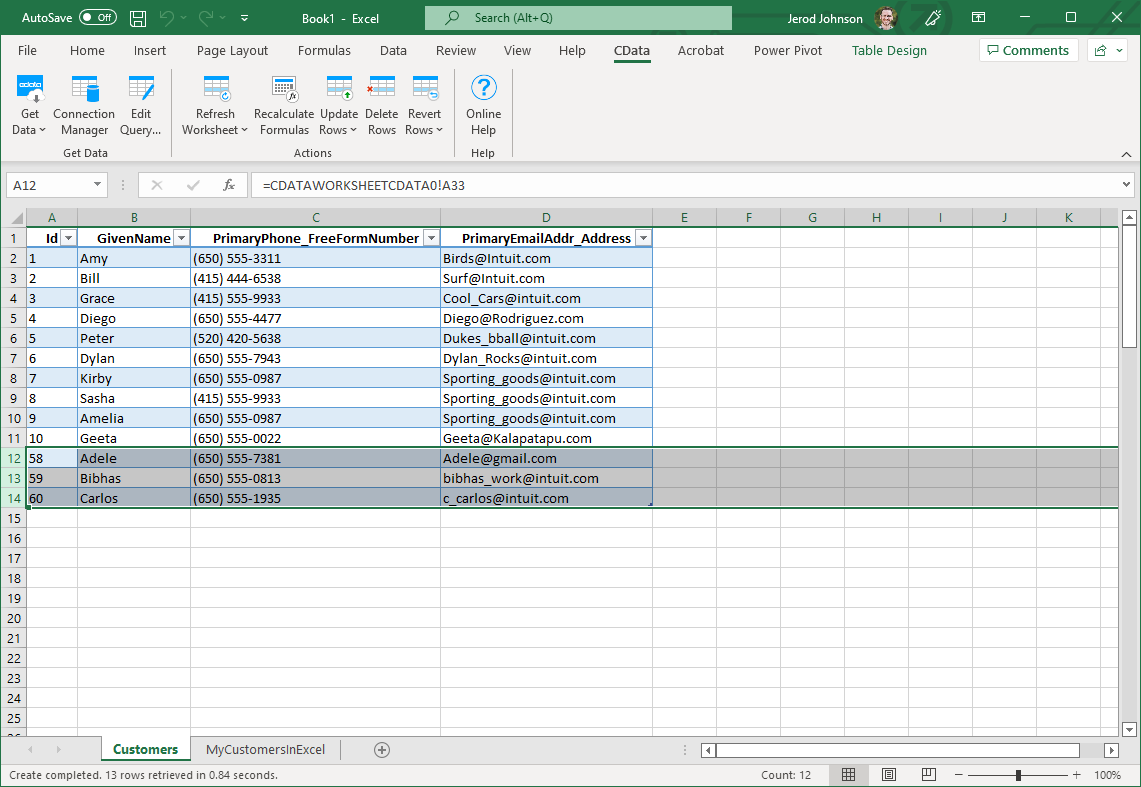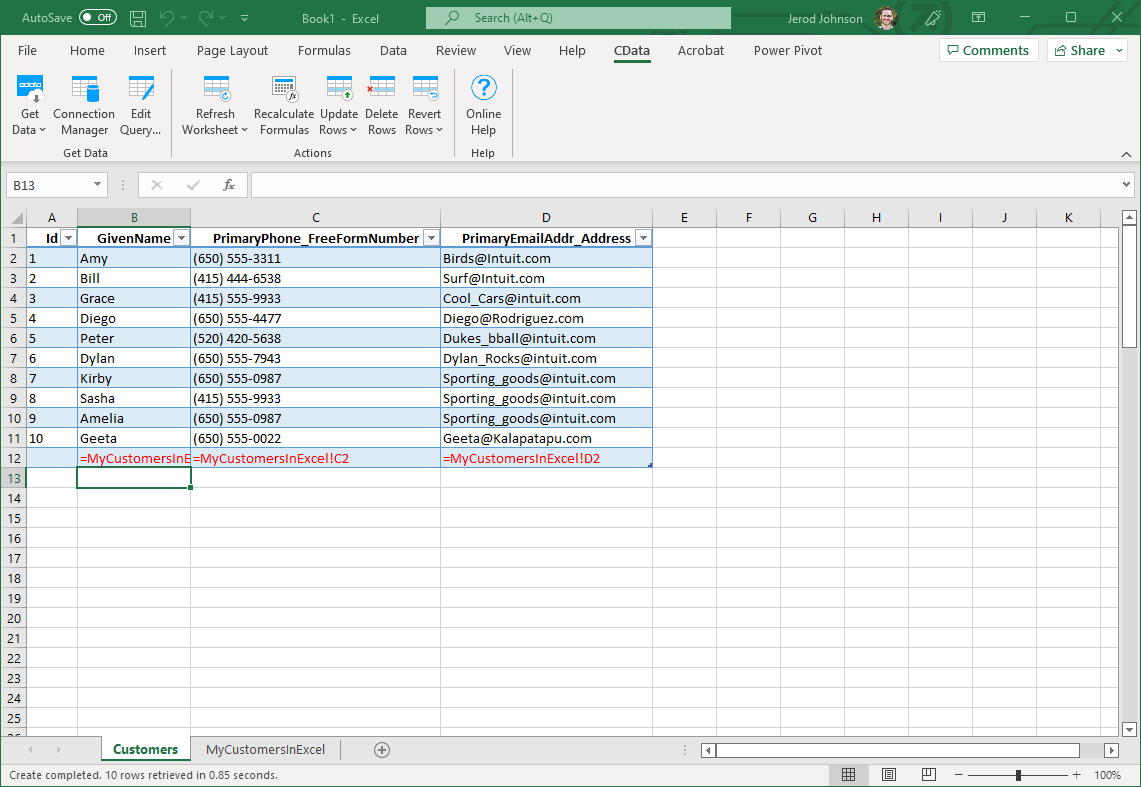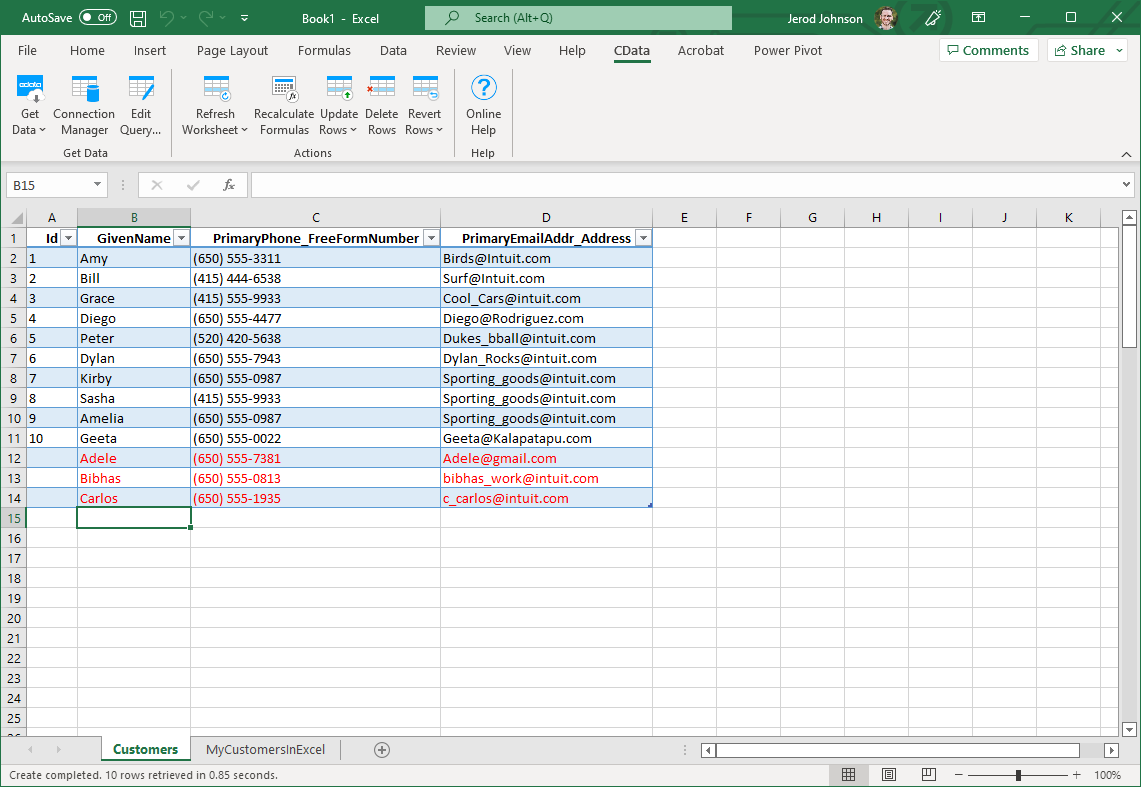Discover how a bimodal integration strategy can address the major data management challenges facing your organization today.
Get the Report →How to update QuickBooks from Excel
This article explains how to transfer data from Excel to QuickBooks using the Excel Add-In for QuickBooks.
The CData Excel Add-In for QuickBooks enables you to edit and save QuickBooks data directly from Excel. This article explains how to transfer data from Excel to QuickBooks. This technique is useful if you want to work on QuickBooks data in Excel and update changes, or if you have a whole spreadsheet you want to import into QuickBooks. In this example, you will use the Customers table; however, the same process will work for any table that can be retrieved by the CData Excel Add-In.
Establish a Connection
If you have not already done so, create a new QuickBooks connection by clicking From QuickBooks on the ribbon.
When you are connecting to a local QuickBooks instance, you do not need to set any connection properties.
Requests are made to QuickBooks through the Remote Connector. The Remote Connector runs on the same machine as QuickBooks and accepts connections through a lightweight, embedded Web server. The server supports SSL/TLS, enabling users to connect securely from remote machines.
The first time you connect, you will need to authorize the Remote Connector with QuickBooks. See the "Getting Started" chapter of the help documentation for a guide.
Retrieve Data from QuickBooks
To insert data into QuickBooks, you will first need to retrieve data from the QuickBooks table you want to add to. This links the Excel spreadsheet to the QuickBooks table selected: After you retrieve data, any changes you make to the data are highlighted in red.
- Click the From QuickBooks button on the CData ribbon. The Data Selection wizard is displayed.
- In the Table or View menu, select the Customers table.
- In the Maximum Rows menu, select the number of rows you want to retrieve. If you want to insert rows, you need to retrieve only one row. The Query box will then display the SQL query that corresponds to your request.
- In the Sheet Name box, enter the name for the sheet that will be populated. By default the add-in will create a new sheet with the name of the table.
Insert Rows to QuickBooks
After retrieving data, you can add data from an existing spreadsheet in Excel.
- In a cell after the last row, enter a formula referencing the corresponding cell from the other spreadsheet; for example, =MyCustomersSheetInExcel!A1.
![A local copy of a table. One row will be inserted. (QuickBooks is shown.)]()
- After using a formula to reference the cells you want to add to QuickBooks, select the cells that you are inserting data into and drag the formula down as far as needed. The referenced values you want to add will be displayed on
the Customers sheet.
![The range of changes to update. (QuickBooks is shown.)]()
- Highlight the rows you want to insert and click the Update Rows button.
As each row is inserted, the Id value will appear in the Id column and the row's text will change to black, indicating that the record has been inserted.









